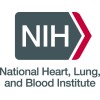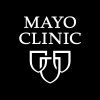
Observational Study for Patients With Hypertrophic Cardiomyopathy
HCM - Hypertrophic CardiomyopathyObservational study on patients with hypertrophic cardiomyopathy aims to investigate the correlation between cardiac fibrosis, as indicated by cardiac magnetic resonance, and the prognosis, and further to explore biomarkers for cardiac fibrosis and adverse prognosis of hypertrophic cardiomyopathy. Therefore, endpoints including all-cause mortality, cardiovascular death, ventricular arrythmia, non-fatal stroke, non-fatal myocardial infarction, sudden death, successful cardiopulmonary resuscitation will be evaluated.

Characterization of Patients With Uncommon Presentations and/or Uncommon Diseases Associated With...
CardiomyopathyLi-Fraumeni Syndrome3 moreBackground: - Researchers are interested in studying individuals who have known or suspected metabolic or genetic diseases that put them at a high risk for heart diseases or diseases of their blood vessels. To improve the results of the study, both affected and nonaffected individuals will be asked to provide blood and other samples and will undergo tests to evaluate heart and lung function. Nonaffected individuals will include relatives of affected individuals and healthy nonrelated volunteers. Objectives: - To study individuals who have or are at risk for cardiovascular diseases, as well as their unaffected relatives and healthy volunteers. Eligibility: - Individuals between 1 and 100 years of age. Participants may be healthy volunteers, individuals with cardiovascular diseases, or unaffected relatives of individuals with cardiovascular diseases. Design: Participants will have some or all of the following tests, as directed by the study researchers: Photography of the face and full body Body measurements Radiography, including chest or limb x-rays Metabolic stress testing to study heart and muscle function Echocardiography to study heart function Magnetic resonance imaging (MRI) studies, including cardiovascular MRI, angiography, and contrast MRI, to study heart function and performance Computed tomography (CT) angiogram to obtain images of the heart and lungs Positron emission tomography (PET) imaging to study possible fat infiltration of the heart Six-minute walk test to study heart, lung, and muscle function and performance Vascular ultrasound to study blood vessel walls Blood, tissue, and other specimens will be collected for research and testing, and will be taken either as part of the clinical study or during surgical procedures. Follow-up studies may be performed under separate research protocols.

French Hypertrophic Cardiomyopathy Observatory
Hypertrophic CardiomyopathyHypertrophic cardiomyopathy (Hypertrophic CardioMyopathy=HCM) remains a poorly understood disease with an assumption insufficiently codified. There is no data available in France on the profile of patients, diagnostic methods and assessment and therapeutic use. The purpose of this study is to establish a monitoring of patients with HCM (sarcomere of origin or not) in France (diagnosis, treatment)

Genetics of Cardiovascular and Neuromuscular Disease
CardiomyopathyArrhythmia1 moreWe are studying the genetics of human cardiovascular and neuromuscular disease. There are many different genetic regions that have been associated with the development of cardiomyopathy. An equal number of genetic regions have been associated with muscular dystrophy and there is overlap because some of the identical genes, when mutated, produce both cardiomyopathy and muscular dystrophy. We are working to identify genes and gene mutations associated with cardiomyopathy, arrhythmias and muscular dystrophy. We propose to screen these samples for mutations in genes known to be involved in these disorders.

Cirrhotic Cardiomyopathy Based on Point-of-care Echocardiography, Biomarkers and Histology
Cirrhotic CardiomyopathyCirrhosis2 moreCirrhotic cardiomyopathy is associated with increased risk of complications like hepatorenal syndrome, refractory ascites, impaired response to stressors including sepsis, bleeding or transplantation, poor health related quality of life and increased morbidity and mortality. Left ventricular diastolic dysfunction (LVDD) is associated with risk of hepatorenal syndrome (HRS) , septic shock. , heart failure in the perioperative period following liver transplantation, and after trans-jugular intrahepatic portosystemic shunt (TIPS) insertion . The echocardiographic E/e' ratio is a predictor of survival in LVDD, with multiple studies, including prospective data from our Centre.

Etiological DiagnOsis of caRdiac Diseases Based on echoCardiograpHIc Images and Clinical Data.
Hypertension ArterialHypokinetic2 moreResearch hypothesis - Recent studies have shown that high-dimensional descriptors of the cardiac function can be efficiently exploited to characterize targeted pathologies. In this project, the investigators hypothesize that echocardiograms possess a wealth of information that is currently under-exploited and that, combined with relevant patient data, will allow the development of robust and accurate digital tools for etiological diagnosis. Objectives - Based on key advances recently obtained in image analysis, notably by members of the consortium, the objective of this project is to develop rigorous and explainable cardiac disease prediction models from echocardiography based on the transformer paradigm (AI). The strength of this study lies in the development of a strong AI framework to model the complex interactions between high-quality image-based measurements extracted from echocardiograms and relevant patient data to automatically predict etiological diagnosis of cardiac diseases

Clinical Comparison of Patients With Transthyretin Cardiac Amyloidosis and Patients With Heart Failure...
Transthyretin Amyloid CardiomyopathyHeart FailureClinical comparison of patients with transthyretin cardiac amyloidosis and patients with heart failure with reduced ejection fraction

A Prospective Incident Study of Arrhythmias in Hypertrophic Cardiomyopathy
Hypertrophic CardiomyopathyThe purpose of this research study is to understand more about various heart rhythms (electrical problems) in persons with hypertrophic cardiomyopathy with and without sleep apnea.

Impella Supported OPCABG
Ischemic CardiomyopathyThe present study introduces a novel approach to coronary revascularization through the use of a short term minimally-invasive left ventricular assist device (LVAD) to minimize myocardial injury and eliminate low output state during the perioperative period

Defining the Genetics, Biomarkers and Outcomes for Dilated Cardiomyopathy
Dilated CardiomyopathyCardiovascular DiseasesFinding new ways to diagnose and treat Dilated Cardiomyopathy (DCM) could improve the health and well-being of patients with this condition. The main aim of this research study is to help develop better ways of diagnosing and treating patients with DCM. The information that is collected may help develop tailored treatments for patients with this disease in the future. This research study will recruit patients with DCM from a number of centres across England and follow their health over a period of years. Patients will give some blood samples for a type of genetic test called whole genome sequencing (WGS) to look for genetic changes. Patients will also have a magnetic resonance imaging (MRI) scan of their heart to look for any changes in the heart such as scarring, and check their heart function. The aim of this study is to discover if using WGS and MRI can improve the diagnosis of DCM. Another aim of the study is to look at how genetic changes and scarring in the heart may affect the progress of the disease. Studying patients with DCM may also help the investigators learn more about diagnosing and treating other diseases of the heart. The second aim of this study is to see whether using WGS and MRI scanning can also be useful in other types of heart diseases which might be affected by genetic changes or scarring in the heart.
